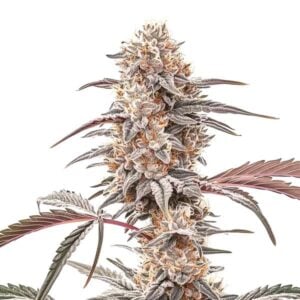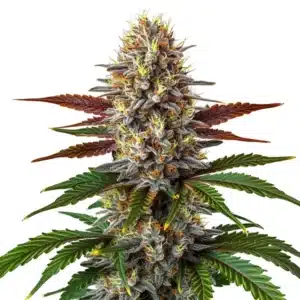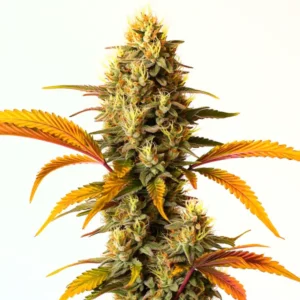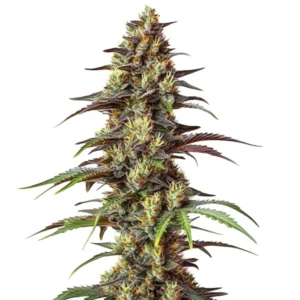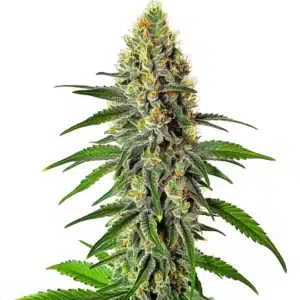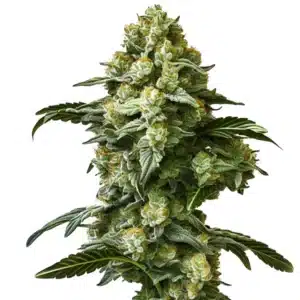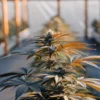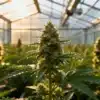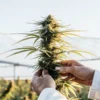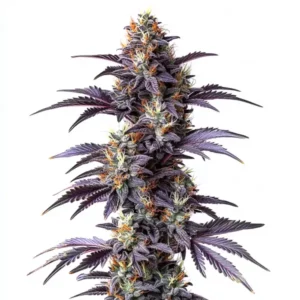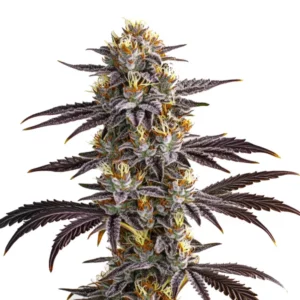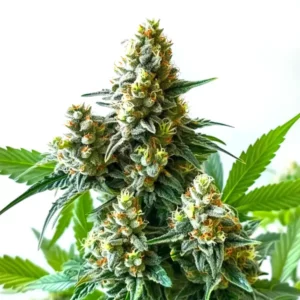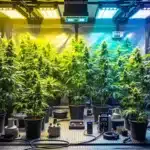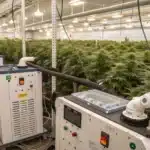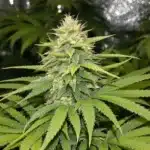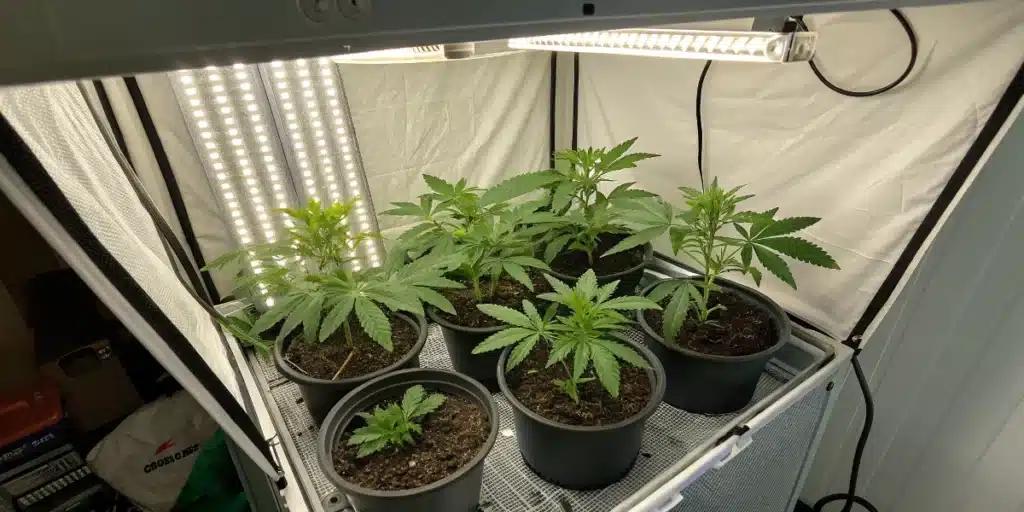
Designing the Perfect Indoor Grow Room
Planning Your Space
Layout and Design
Creating an indoor grow room requires careful planning. Whether you’re working with a spare bedroom, a closet, or a dedicated grow tent, the design should cater to the needs of your plants while maximizing your available area.
Start by measuring your space accurately. When measuring your space, remember that height is fundamental for a good indoor grow. Aim for a minimum of 2 meters (about 6.5 feet) to comfortably fit your plants, lights, and ventilation system. Consider using vertical space; shelves or multi-tier systems can significantly increase your growing area.
Recommended Strains
Biscotti
|
|
THC | 25% - 30% (High) |
|
|
Type | Feminized |
|
|
Yield | Medium |
|
|
Phenotype | 80% Indica / 20% Sativa |
Biscotti Mintz
|
|
THC | 22% - 25% (Medium) |
|
|
Type | Feminized |
|
|
Yield | High |
|
|
Phenotype | 80% Indica / 20% Sativa |
Next, think about the flow of your grow room. You’ll want to position your plants in a way that allows easy access for maintenance tasks like watering, pruning, and harvesting.
Equipment Placement
The right positioning of your tools and gadgets can enhance your grow operation. Start with your lights; they should be positioned to provide even coverage. Hanging lights from adjustable fixtures allows you to modify their height as your plants grow.
Next, think about your ventilation system. Proper air circulation is vital. Place fans strategically to promote airflow, and position your exhaust system to effectively remove stale air. Finally, organize your water supply and nutrient delivery systems for easy access.
Promos & Deals
Environmental Controls
Lighting and Ventilation
Lighting is a cornerstone of any successful indoor grow room. LED lights are a popular choice for their energy efficiency and low heat output. Choose lights with a spectrum that mimics natural sunlight.
Ventilation is equally important. Stale air can lead to mold and pests. For this to work effectively, all grow spaces must have a dedicated air inlet and outlet. The best practice is to place the air inlet low to draw in cool, fresh air, and the air outlet high to expel warm, stale air, taking advantage of natural convection. This setup not only helps regulate temperature but also provides plants with the carbon dioxide they need.
Additionally, consider incorporating carbon filters to minimize odors. The smell from an indoor cannabis grow can be very strong and travel far. It’s important to remember that odor naturally travels upwards, so be particularly mindful if you have neighbors living above your grow space.
Temperature Management
Temperature management is another critical aspect. Plants thrive within specific temperature ranges. Generally, daytime temperatures should hover around 75-85°F (24-29°C), while nighttime temperatures can dip to around 65-70°F (18-21°C). Using fans and air conditioning can help, but be mindful of humidity levels as well, aiming for a relative humidity of around 40-60%.
Water Quality: pH and Temperature
Beyond the air, the quality of your water is a daily environmental factor. For optimal nutrient uptake, your irrigation water should consistently be adjusted to a pH of around 6.0 for soil. Furthermore, water temperature is crucial for root health. The ideal temperature for irrigation water is around 18°C (65°F) to avoid shocking the roots and to ensure good oxygen levels.
Choosing the Right Grow Medium for Indoors
Selecting the ideal grow medium is one of the most important decisions. Your choice should reflect your level of experience and space.
- Soil: Best for beginners, soil is forgiving and rich in organic matter.
- Coco Coir: A favorite among intermediate growers, coco is lightweight and promotes excellent root development.
- Hydroponics: Perfect for experienced cultivators aiming for rapid growth and big yields.
By choosing the right grow medium and staying on top of its maintenance, you’ll create a consistent, resilient foundation for your plants.
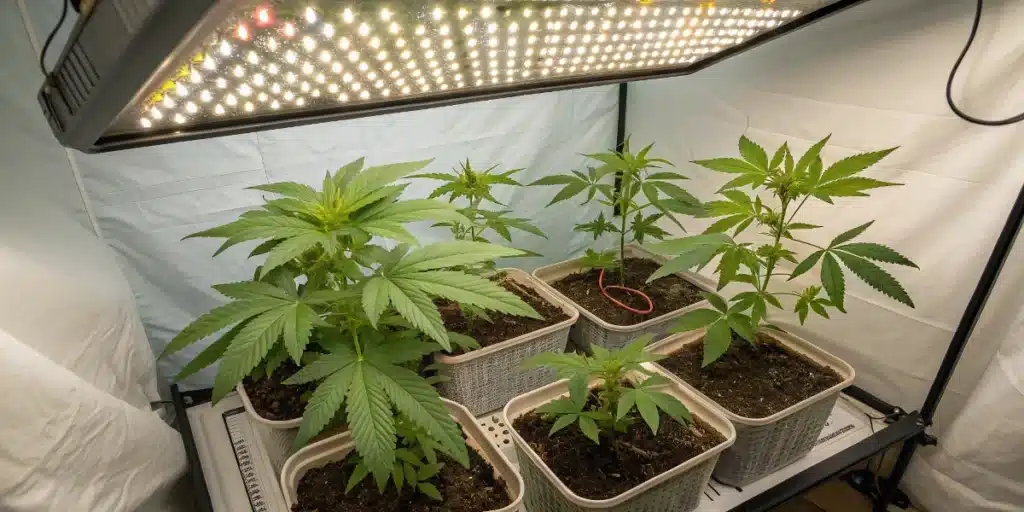
Optimization and Safety
Maximizing Yield
Maximizing yield is the ultimate goal for many. Employ training techniques, such as topping or low-stress training (LST), to encourage bushier growth. Use high-quality nutrients tailored for the specific growth stage of your plants, and regularly check the pH and EC levels. Lastly, don’t overlook the importance of timing your harvest by monitoring trichomes.
Grow Room Safety and Electrical Setup
A successful indoor grow room isn’t just about healthy plants, it’s also about safety. High-powered lights and fans pull electricity and create heat.
Keep flammable materials out of the grow area.
Power Management: Calculate your electrical load to avoid overloading circuits. Use dedicated circuits if possible and high-quality, rated surge protectors.
Fire Prevention and Equipment Maintenance: Good maintenance and proactive safety measures will ensure your grow room is secure.
- Use quality digital timers.
- Install a small fire extinguisher nearby: Just in case. Opt for one rated for electrical fires (Class C).
- Inspect your wiring regularly for damage.
- Keep flammable materials out of the grow area.
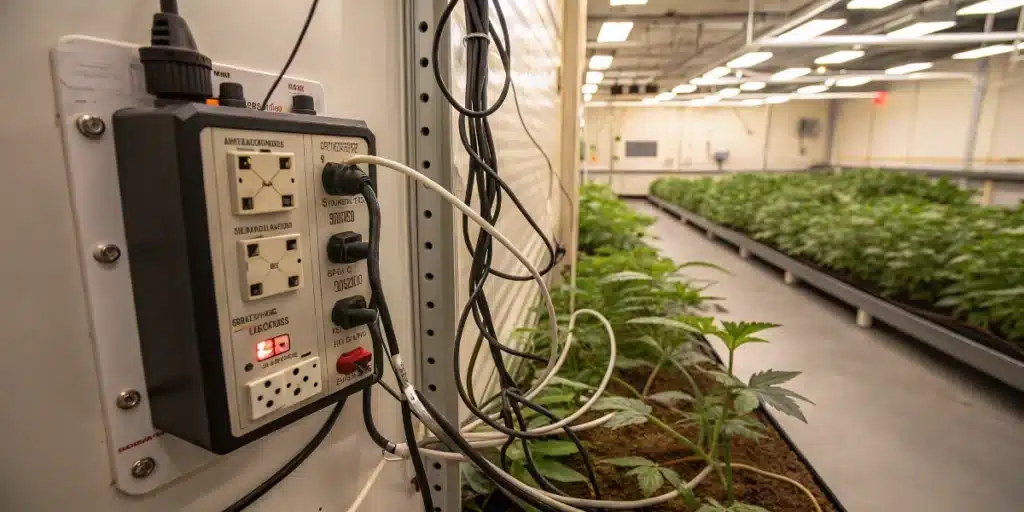
FAQS
What are the best lights for an indoor grow room?
The best lights depend on your specific needs, but many indoor growers opt for LED lights due to their energy efficiency and low heat output. HPS lights are also popular for their intense light output but can generate more heat, necessitating better ventilation.
How often should I water my plants in an indoor grow room?
Watering frequency varies based on plant size, strain, and environmental conditions. A good rule of thumb is to check the top inch of soil; if it feels dry, it’s time to water. Always ensure proper drainage to avoid overwatering.
Can I use regular potting soil for my indoor weed grow setup?
While regular potting soil can work, it’s often beneficial to use a soil mix specifically formulated for cannabis. These mixes typically provide better drainage and nutrient availability, helping your plants thrive.


